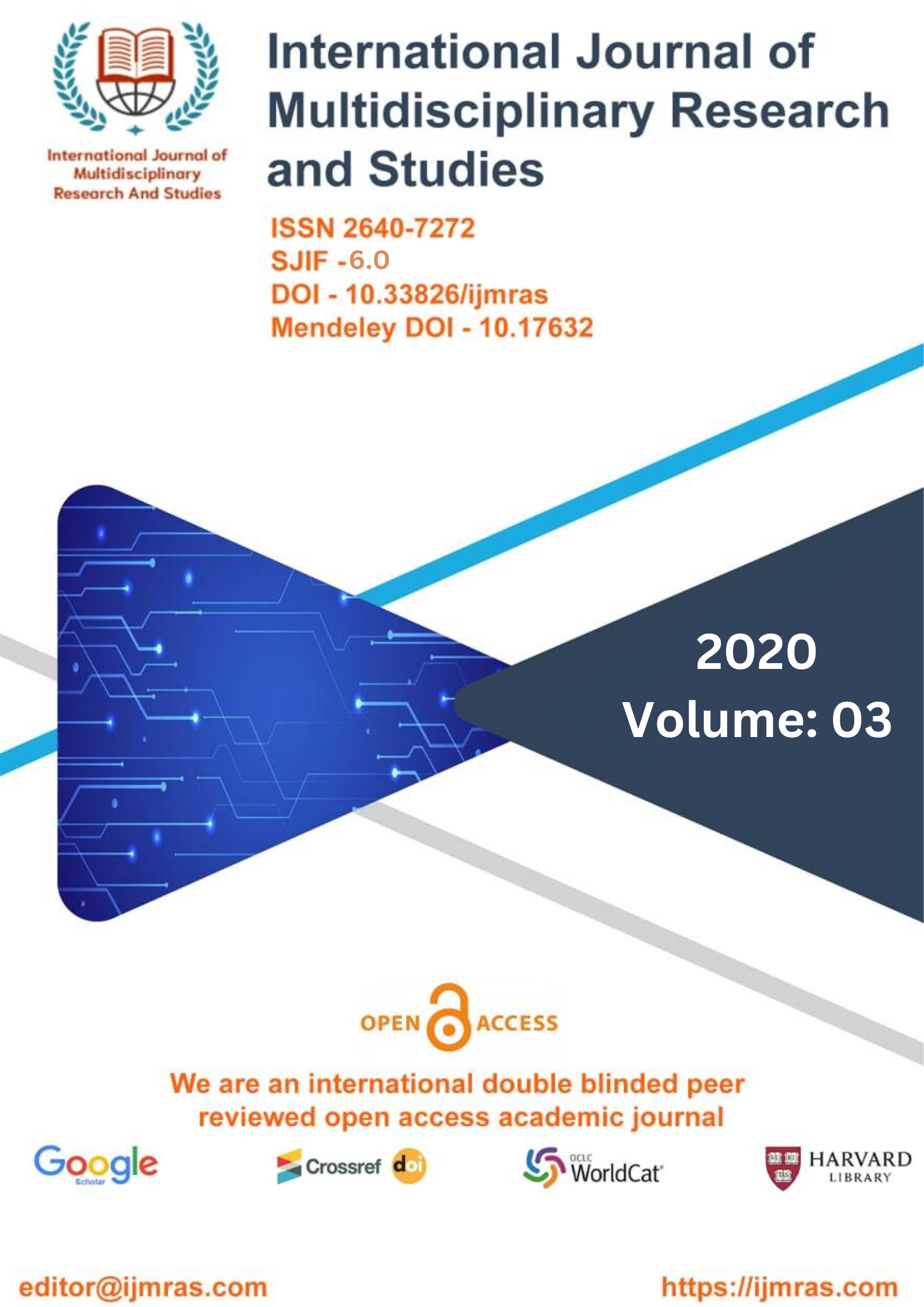IMPORTANCE OF SELF-HELP GROUPS (SHGS) FOR THE WOMEN

Abstract
In line with this many effort have been initiated towards poverty eradication using a technique of formation of people in to self-help groups (SHG). The idea of forming people in to groups is to enhance them the ability and provide opportunities to get employment through collaborative support where they can work collectively to come out of the clutches of poverty. Therefore, SHG is one of the platforms that provide opportunities to people to engage in the group to achieve a common goal. The involvement in the SHG guaranteed to get access on other financial aid and support through the SHPIs or financial institutions like banks and NGOs. It is seen that people engaging in the SHG movement can either work collaboratively for IGAs or individually taken up for any IGAs mainly in the activities of farming, animal husbandry, small scale business, handloom and handicraft, etc.
Keywords
Shgs, WomenHow to Cite
References
Birthal, P.S., P.K. Joshi, D.S. Negi, and S. Agarwal. 2014. “Changing Sources of Growth in Indian Agriculture: Implications for Regional Priorities for Accelerating Agricultural Growth.” Discussion Paper 01325. Washington, D.C.: International Food Policy Research Institute.
Capalbo, Susan M. and John M. Antle (Eds.) 1988. Agricultural Productivity Measurement and Explanation. Washington, D.C: Resources for the Future.
Caves, D.W., L.R. Christensen and W.E. Diewert. 1982. "The Economic Theory of Index Numbers and the Measurement of Input, Output and Productivity." Econometrica, 50(6): 1393– 1414.
Chand, R., P. Kumar and S. Kumar. 2011. “Total Factor Productivity and Contribution of research Investment to Agricultural Growth in India.” Policy Paper 25, New Delhi: National Centre for Agricultural Economics and Policy Research (NCAP).
CGWB. 2017. Dynamic Groundwater Resources of India (as on March 2013). Central Groundwater Board, Ministry of Water Resources, River Development and Ganga Rejuvenation, Government of India.
Coelli, T.J. and D.S. Prasada Rao. 2003. "Total Factor Productivity Growth in Agriculture: A Malmquist Index Analysis of 93 Countries." Working Paper Series No. 02/2003, Centre for Efficiency and Productivity Analysis (CEPA), School of Economics, University of Queensland, Australia.
Coelli, Timothy J., D.S. Prasada Rao, Christopher J. O’Donnell, and George E. Battese. 2005. An Introduction to Productivity and Efficiency Analysis, Second Edition, USA: Springer.
De Janvry. 2010. “Agriculture for development: new paradigm and options for success.”Agricultural Economics, 41(S1):17-36.
Diewert, W.E. 1976. “Exact and Superlative Index Numbers.” Journal of Econometrics, 4: 115–145. Diewert, W.E. 1978. “Superlative Index Numbers and Consistency in Aggregation.” Econometrica,46(4): 883–900.
Evenson, R.E., C.E. Pray and M.W. Rosegrant. 1999. “Agricultural Research and Productivity Growth in India.” Research Report 109. Washington, D.C.: International Food Policy Research Institute.
License
Copyright (c) 2020 SAMITA GAUTAM

This work is licensed under a Creative Commons Attribution 4.0 International License.
Individual articles are published Open Access under the Creative Commons Licence: CC-BY 4.0.



